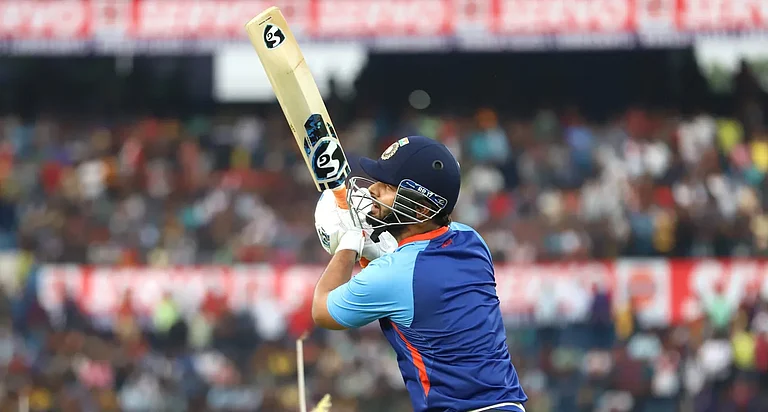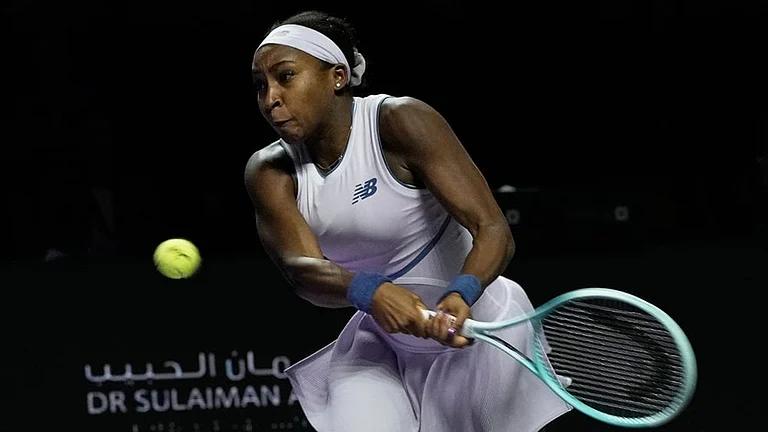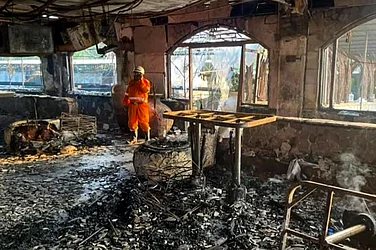There is per se nothing wrong with the government of the day constituting a committee to examine a constitutionally acceptable mode of implementing a policy that it considers desirable. That said, the move is certainly complex, as it seeks to depart from the existing, time-tested and fairly robust scheme of an independent and asynchronous election cycle for the Centre and the states. Established jurisprudence bars the ascription of motives or malice to the legislature. Political motives are not very material in examining the validity of the actions of the legislature from a constitutional lens. Good motives cannot legitimise defects or vice versa. This piece examines the possible hurdles in implementing the One Nation One Election mandate from a constitutional perspective.
The Constitutional Framework
The Constitution prescribes (under Articles 83 and 172) a term of “five years”, and “no longer” for the Lok Sabha and the legislative assemblies of the states, unless they are “dissolved sooner”. Poll schedules are currently extremely disparate—at least one legislature goes to the polls every year. For synchronisation, the terms of the legislatures would either need to be prematurely dissolved or extended. A consensus is now emerging that even a one-time measure would require constitutional amendments. But the problem does not end here—the Constitution would also need to be amended to account for hung assemblies, no-confidence motions and imposition of President’s Rule in a state and to ensure synchronicity in the schedule despite these political vagaries. In fact, from 1951-52 to 1967, the cycle of elections was mostly simultaneous and was broken precisely because of such events.
Constitutional amendments are subject to substantive and procedural limitations. So, two key questions arise. First, what will be the impact of alteration of the existing framework—where the terms of the Lok Sabha and the state legislatures are designed to be independent of each other and not interdependent—on the constitutional scheme? Secondly, who has a say in bringing such a scheme? In addition to Parliament, do more than 50 per cent of the state legislatures also need to approve the scheme?
A draft report of the Law Commission of India (2018) gives some semblance of the actual nitty-gritties needed to effectuate the policy. The report is still in draft form and has been made public to invite comments.
To start with, like other quarters, the Commission acknowledges that even a one-time alteration of the tenure of legislatures would need a constitutional amendment. Thereafter, the Commission proposes, imperfectly and with a palpable lack of confidence, a slew of measures to address the political vagaries.
No-Confidence Motions: The Commission suggests that bringing a “Constructive No Confidence Motion”, i.e. a vote of no-confidence should not be permitted unless it is accompanied by an alternative positive proposal to form the government. Thus, effectively, a government which has clearly lost the majority of the House would be able to continue for the full term only because there is no alternative. In normal circumstances, such a House would go for polls again. The measure is designed only to prevent premature elections.
Hung Houses: The proposal is to give a free hand to the President or the Governor to call a political party to form the government, whether there was a pre-poll alliance or not. In case this doesn’t work out, the suggestion is to impose President’s rule for the states.
Mid-Term Elections: At the Centre, the Commission acknowledges that President’s rule cannot be imposed, so mid-term elections are the only option in case of a hung House. But the Commission has proposed that the term of the newly-elected government must be truncated, so that the next cycle of elections is not disrupted.
Ratification: On the need for ratification of the amendments by the states, the Commission opines that though ratification is not legally required, it should still be obtained out of abundant caution.
The ‘Basic Structure’ and ‘Constitutional Morality’
The concepts of ‘basic structure’ and ‘constitutional morality’, though nebulous and overlapping, are the parameters on which the scheme for simultaneous elections will ultimately get tested, once the text of the exact amendments is known. For any amendment, immunity from judicial review is simply not available. The Supreme Court, time and again, has held that no radical constitutional amendment—which leads to a distortion or alteration of the basic features of the Constitution—can be permitted. This form of protection against amendments by elected representatives, since inception, has never been without protest. But it has stayed with India, and served her people well.
Through judicial interpretation over time, it has become clear that democracy, federalism and reasonableness are the core constitutional values, which are also part of the basic fabric of the Constitution and these cannot be mutilated or destroyed.
As the proposals of the Commission indicate, a synchronous election schedule will be the overarching principle and will be accorded primacy. This will invariably and repeatedly be at the cost of the “will of the people”. Imposition of President’s Rule in a state or holding a “Constructive No Confidence Motion”—as proposed by the Commission—only to sustain the election schedule is certainly contrary to the ethos of democracy. Shortening the term of duly elected governments till the next election cycle (which could be a year or two away) is also impermissible. It is difficult to fulfil a mandate in just one or two years, and any such government would be a temporary or caretaker government, making the entire exercise of holding mid-term elections futile.
It is also highly doubtful whether even a one-time dissolution of legislatures will withstand constitutional scrutiny in the first place. At present, the suspension of a duly constituted government at the state level is permitted only for the failure of constitutional machinery under Article 356. Any additional reason, for administrative exigencies which may be added through amendments may not be justifiable.
The will of the people cannot be made to yield to clockwork. The life of the Lok Sabha or the state legislatures was never intended or designed to be co-terminus or linked with each other. Both operate independently yet harmoniously. A fixed and not a fleeting or uncertain term has been envisaged both for the Lok Sabha and the state legislatures. The quasi-federal mode adopted and implemented under the Constitution provides a unique and delicate balance between the two sets of governments, and the distribution of legislative powers between them. This balance will certainly be disrupted by the proposals.
Going a step ahead from the obvious perils―democracy and federalism have also been accorded an expanded and full meaning in constitutional interpretation and theory. Thus, it is not just a democratic form of government, but a pluralistic, dynamic and vibrant democracy which is an important constitutional value. An independent election cycle also means that there is constant accountability of political parties and the government. The party in power at the Centre is put to the test whenever it goes to polls in any state. Even regional parties are tested during panchayat and municipal elections. A parallel can be drawn with the US, where mid-term elections are considered a referendum on the President. The continual and frequent referendum of ideas and policies (while also ensuring stability of tenure) ensures that they can be improved/varied/or even abandoned on the basis the verdict of some section of the electorate.
Need for Ratification?
The second facet of the scheme is procedural, but not insignificant. Certain “entrenched provisions” of the Constitution cannot be amended without ratification by states. The proviso to Article 368(2) provides that any amendment which seeks to make any change to Article 54 (Election of the President) or Article 55 (Manner of the Election) or the “representation of States in Parliament” requires to be ratified by the legislature of not less than one half of the states. Non-fulfilment of this mandatory requirement, if attracted, will make the amendments void. The need for ratification is confined to only those matters which are within the scope of the proviso to Article 368(2). This becomes relevant in the case of composite amendments to ascertain what exactly needs the assent of the state legislatures, and whether the amendments are divisible or severable in nature or not.
As per Justice Rohinton Nariman (in Union of India v Rajendra N Shah, Supreme Court, 2021), an amendment need not be direct in the sense of adding, subtracting, or modifying the language of the entrenched provisions, in order to require ratification. The test is to ascertain whether a change would impact a particular Article and the principle contained therein in some significant way. If yes, ratification becomes necessary.
Though much will depend on the exact text of the amendments and the significance of the impact they will have (based on factual data), it may be difficult to state that “representation of States in Parliament” will be left without any impact whatsoever by the amendments dissolving or extending the terms of state assemblies for synchronisation. States are represented in Parliament through the Rajya Sabha—whose members are elected by state assemblies and 1/3rd of whom retire every two years.
Consequently, the Rajya Sabha is never dissolved and elections to the Rajya Sabha are held continually. Even a one-time scheme of dissolution or extension of terms of the state assemblies would have an impact on the constitution of the Rajya Sabha. A state government with a truncated term may not secure representation because of early dissolution. Conversely, a legislature, which enjoys an extended term, may secure representation in the Rajya Sabha—which it may not have. This impact will be recurring each time mid-term elections are held. In a similar vein, amendments may also impact the election of the President, since the President is elected under Article 54 by elected members of Parliament and the legislative assemblies of the states.
(Views expressed are personal)
(This appeared in the print as 'The Legal Tangle')
Amit Agrawal & Radhika Yadav are lawyers who practise before the Supreme Court and the Delhi High Court





















